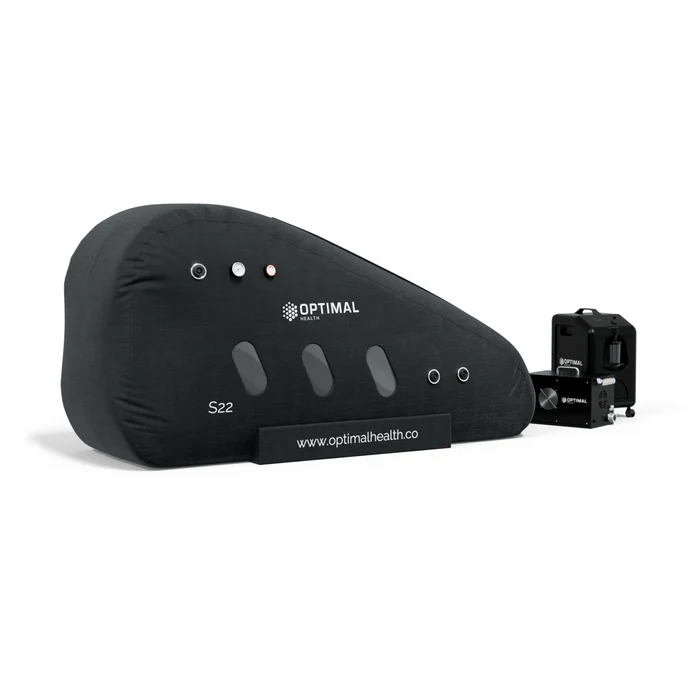Collagen ProductionCollagen ProductionWith Infrared LightWith Infrared LightTherapyTherapy
A gentle, non-invasive way to build healthier skin, stronger scars, and more resilient tendons—right here at Optimal Health & Recovery at Inspire, Clonmel.
Why Collagen Matters.
Collagen is your body’s scaffold. It keeps skin firm, scars supple, and tendons/ligaments strong. Age, sun exposure, training load, hormones, and injury can all reduce new collagen formation and speed up breakdown—showing up as fine lines, laxity, stubborn scars, and tendon niggles.
Our Infrared (Red/NIR) Bed is designed to reactivate collagen production safely and comfortably—no needles, no downtime.

How the Infrared Bed Stimulates Collagen (simple explanation)
Our bed uses specific red and near-infrared wavelengths (633, 660, 810, 850, 940 nm) that pass into the skin and connective tissue. Your cells absorb this light (photobiomodulation), which helps the mitochondria—your cells’ “power stations”—make more energy (ATP). With more energy:
- Fibroblasts (collagen-making cells) ramp up pro-collagen production.
- Enzymes that break down collagen (MMPs) are dialled down.
- Microcirculation improves, delivering nutrients and oxygen for better remodeling.
- Gentle anti-inflammatory signaling helps tissues heal in a calmer state.
Bottom line: the bed nudges tissues into repair mode, so collagen builds steadily and the quality of skin, scars, and connective tissue improves.


Gentle red/near-infrared light encourages your body to make and remodel collagen—helping skin look firmer, scars soften, and tendons/ligaments handle load more comfortably. By boosting cellular energy, calming excess inflammation, and improving microcirculation, the bed supports cleaner, faster tissue repair across skin and connective tissue. Below are the most common ways people use it; we tailor every plan and can coordinate with your clinician when needed.
Skin Firmness & Texture
Smoother fine lines; improved elasticity and glow.
More even tone; softer appearance of acne marks and sun damage.
Healthier skin barrier and hydration look.
Scar & Stretch-Mark Care
Supports remodeling of post-surgical scars (e.g., C-section), traumatic scars, and stretch marks.
Helps scars feel softer, flatter, and more flexible over time.
Reduces redness and irritation around healing areas (alongside standard care).
Tendon, Ligament & Joint Support
Adjunct for Achilles/patellar tendinopathy, tennis/golfer’s elbow, rotator cuff, plantar fasciitis.
Encourages collagen organization for load tolerance and comfort.
Eases peri-articular tightness and post-training stiffness.
Wound & Post-Procedure Support
Assists tissue quality around slow-to-settle areas (under clinical guidance).
Pairs with routine wound/scar care to improve outcomes.
Skin looks brighter, better hydrated; tissues feel calmer.
In this early phase the light is boosting cellular energy and microcirculation, so more oxygen and nutrients reach the area while excess inflammation starts to settle. You’ll often notice a healthy “glow,” less tightness around scars, and calmer, less reactive tissue. Collagen hasn’t rebuilt yet—these changes are mainly improved blood flow, lymphatic drainage, and reduced inflammatory signals.
Early firmness and elasticity changes; scars begin to feel softer.
Fibroblasts are now laying down new procollagen and supporting molecules that hold water in the dermis, so skin can feel springier and look smoother. In scars, redness typically eases and edges feel more supple. In tendons/ligaments, early collagen organization begins. Consistent sessions (plus good protein and vitamin C) help this stage progress.
Visible remodeling—smoother skin; improved scar pliability; better tendon comfort under load.
Collagen fibres start to reorganise and align, with more mature Type I fibres forming and excess breakdown enzymes dialling down. Scars move and stretch more comfortably; tugging and itch often reduce. Tendons generally tolerate graded loading better with less post-exercise irritation. This is when changes are most noticeable in photos and daily function.



